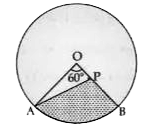In the pth term of an A.P. is q and qth term is p, prove that the nth term is equal to p+q-n.Solution in Kannada
Step by step video & image solution for In the p^(th) term of an A.P. is q and q^(th) term is p, prove that the n^(th) term is equal to p+q-n. by Maths experts to help you in doubts & scoring excellent marks in Class 10 exams.
Updated on:21/07/2023Topper's Solved these Questions
- ARITHMETIC PROGRESSIONSBOOK - OSWAAL PUBLICATIONCHAPTER - ARITHMETIC PROGRESSIONSEXERCISE - LONG ANSWER TYPE QUESTIONS-II
13 Videos
- ARITHMETIC PROGRESSIONSBOOK - OSWAAL PUBLICATIONCHAPTER - ARITHMETIC PROGRESSIONSEXERCISE - TEXTBOOK CORNER EXERCISE 1.1
4 Videos
- ARITHMETIC PROGRESSIONSBOOK - OSWAAL PUBLICATIONCHAPTER - ARITHMETIC PROGRESSIONSEXERCISE - SHORT ANSWER TYPE QUESTION
15 Videos
- AREAS RELATED TO CIRCLES BOOK - OSWAAL PUBLICATIONCHAPTER - AREAS RELATED TO CIRCLES EXERCISE - LONG ANSWER TYPE QUESTIONS - I
20 Videos
- CIRCLES BOOK - OSWAAL PUBLICATIONCHAPTER - CIRCLES EXERCISE - TEXTBOOK CORNER (EXERCISE 4.2)
13 Videos
Similar Questions
The sum of four consecutive terms which are in an arithmetic progression is 32 and the ratio of the product of the first and the last term to the product to two middle terms is 7:15. Find the number.
View SolutionIn which of the following situations, does the list of numbers involved form an arithmetic progression, and why?
(i)The taxi fare after each km when the fare is Rs 15 for the first km and Rs 8 for additional km.
(ii) The amount of air present in a cylinder when a vacuum pump removes (14)th of the air remaining in the cylinder at a time.
(iii) The cost of digging a well, after every metre of digging, when it costs 150 for the first metre and rises by 50 for each subsequent metre.
(iv) The amount of money in the account every year, when 10000 is deposited at compound interest at 8 % per annum.
View SolutionHow many two digit numbers are divisible by 3?
View SolutionIn the given figure, AOB is a sector of angle 60∘ of a circle with centre O and radius 17 cm . If AP ⊥ OB and AP = 15 cm find the area of the shaded region.

View SolutionFrom a point Q ,the length of the tangent to a circle is 24 cm and the distacne to Q from the centre is 24.5 cm.The radius of the circle is
(a) 4.92 cm
(b)12 cm
©15 cm
(d)24.5 cm
View SolutionIn a given A.P..If the p th term is q and q th term is p then show that n th term is p+q-n
View SolutionIf the pth term of an A.P. is q and the qth term is p, prove that its nthtermis(p+q−n).
View Solutionif a G.P (p+q) th term =m and (p-q) th term =n, then find its p th term
View SolutionIf the p^(th) term of an A.P is q and q^(th) term is p, prove that its n^(th) term is (p+q-n)
View SolutionIn an A.P., the p^(th) term is (1)/(p) and the q^(th) term is (1)/(p). find the (pq)^(th) term of the A.P.
View SolutionIf p,q,r,s∈N and the are four consecutive terms of an A.P., then pth,qth,rthandsth terms of a G.P. are in
View Solutionयदि किसी गुणोत्तर श्रेणी का (p + q)वां पद m और (p - q)वां पद n हो, तो p वां और q वां पद ज्ञात करो।
View SolutionIf the pth term if an A.P. is q and the qth term of an A.P is p then the rth term is
View SolutionIn a given AP, pth term is qandqth term is p. Show that the nth term is (p+q−n).
View Solutionin a G.P (p+q)th term = m and (p-q) th term = n , then find its p th term
View Solution
